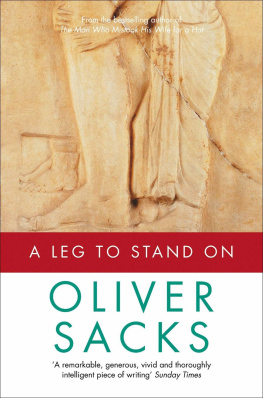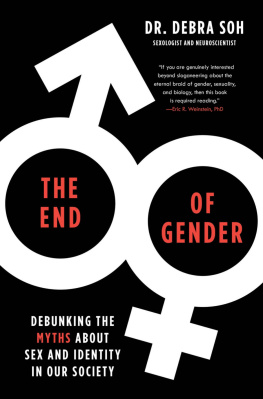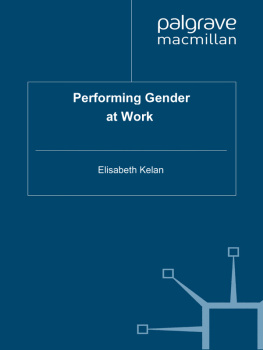GENDER AND WORK IN TODAYS WORLD
GENDER AND WORK IN TODAYS WORLD
A READER
edited by NANCY E. SACKS and CATHERINE MARRONE
First published 2004 by Westview Press
Published 2018 by Routledge
711 Third Avenue, New York, NY 10017, USA
2 Park Square, Milton Park, Abingdon, Oxon 0X14 4RN
Routledge is an imprint of the Taylor & Francis Group, an informa business
Copyright 2004 Taylor & Francis
All rights reserved. No part of this book may be reprinted or reproduced or utilised in any form or by any electronic, mechanical, or other means, now known or hereafter invented, including photocopying and recording, or in any information storage or retrieval system, without permission in writing from the publishers.
Notice:
Product or corporate names may be trademarks or registered trademarks, and are used only for identification and explanation without intent to infringe.
Library of Congress Cataloging-in-Publication Data
Gender and work in todays worlds : a reader / edited by Nancy E. Sacks and Catherine Marrone.
p. cm.
Includes bibliographical references and index.
ISBN 0-8133-4192-2 (pbk. : alk. paper)
1. Sex role in the work environment. 2. Sex discrimination in employment. 3.
Women
Employment. I. Sacks, Nancy E. II. Marrone, Catherine.
HD6060.6.G454 2004
306.3615dc22
2004017382
Interior design by Lisa Kreinbrink
Text set in 10.5-point Adobe Garamond Pro
ISBN 13: 978-0-8133-4192-7 (pbk)
Contents
Introduction
Introduction
Introduction
Introduction
Introduction
Part VI Problems on the Job
Introduction
Introduction
Part VIII The Parent Trap
Introduction
Introduction
Part I
WOMEN AT WORK
In this opening section of Gender and Work in Todays World: A Reader, we look at some very different work settings and occupational statuses for women. For women and men, the work they do occupies, quite literally, a significant part of their identity formation in the contexts of both paid work and the social response to these jobs. These selections tell of the cumulative experience of being and feeling marginalized on many levels. In the readings to follow, there is the clear sense that uniting, theoretically, notions of work, identity, and status befit the case that work affects women in specific and meaningful ways.
First, in this excerpt from Nickel and Dimed, we travel with Barbara Ehrenreich through low-wage work as a Wal-Mart clerk in Middle America. This study is the first, but not the only, research that links work and social class with identity as women struggle to have a real and meaningful life within the low means they earn.
The confining power of work identity reveals itself as obvious social construct in our next reading, from Yuko Ogasawaras Office Ladies: Power, Gender and Work in Japanese Companies. Here, the opportunities and potential for power in employment as office lady or business girl, even in a large banking firm, for example, go unexploited by women. Ogasawara argues that the immediate separation carried out through selective recruitment in this Japanese work setting tracks women and men into a two-tiered, and fundamentally stratified, modern workplace.
Perhaps immigrant women, like those in Domestica, by Pierette Hondagneu-Sotelo, articulate to us even more disturbingly the stark instances whereby some women are clearly reduced to feelings of inadequacy by the work they do. The constant scrutiny of these domestic workers by their household employers of higher social class not only denigrates the tasks these women perform, despite the instrumental function of these tasks to the household, but also further shapes and weakens the workers individual identities.
Finally, in Prostitution and Tourism in Southeast Asia, from Working Women: International Perspectives on Labour and Gender Ideology, Wendy Lee looks at one of the oldest sources of employment, in which women find that the work is contingent on both their own economic status and the desire of men to set a marketplace. Poor women have always found work like this. Because of the economic circumstances that define what we do for work, and despite the general notion that work defines mens identities more, this section clearly describes how work defines a social experience for women as well. Some of the least exceptional jobs provide the most elucidating windows into womens lives, identities, and their own lack of awareness on the need to connect the two.
Nickel and Dimed
Selling in Minnesota
Barbara Ehrenreich
For sheer grandeur, scale, and intimidation value, I doubt if any corporate orientation exceeds that of Wal-Mart. I have been told that the process will take eight hours, which will include two fifteen-minute breaks and a half hour for a meal, and will be paid for like a regular shift. When I arrive, dressed neatly in khakis and clean T-shirt, as befits a potential Wal-Mart associate, I find there are ten new hires besides myself, mostly young and Caucasian, and a team of three, headed by Roberta, to do the orientating. We sit around a long table in the same windowless room where I was interviewed, each with a thick folder of paperwork in front of us, and hear Roberta tell once again about raising six children, being a people person, discovering that the three principles of Wal-Mart philosophy were the same as her own, and so on. We begin with a video, about fifteen minutes long, on the history and philosophy of Wal-Mart, or, as an anthropological observer might call it, the Cult of Dam, First young Sam Walton, in uniform, comes back from the war. He starts a store, a sort of five-and-dime; he marries and fathers four attractive children; he receives a Medal of Freedom from President Bush, after which he promptly dies, making way for the eulogies. But the company goes on, yes indeed. Here the arc of the story soars upward unstoppably, pausing only to mark some fresh milestone of corporate expansion. 1992: Wal-Mart becomes the largest retailer in the world. 1997: Sales top $100 billion. 1998: The number of Wal-Mart associates hits 825,000, making Wal-Mart the largest private employer in the nation.
In orientation we learned that the stores success depends entirely on us, the associates; in fact, our bright blue vests bear the statement At Wal-Mart, our people make the difference. Underneath those vests, though, there are real-life charity cases, maybe even shelter dwellers.
So, anyway, begins my surreal existence at the Comfort Inn.
I live in luxury with AC, a door that bolts, a large window protected by an intact screenjust like a tourist or a business traveler. But from there I go out every day to a life that most business travelers would find shabby and dispiritinglunch at Wendys, dinner at Sbarro (the Italian-flavored fast-food place), and work at Wal-Mart, where I would be embarrassed to be discovered in my vest, should some member of the Comfort staff happen to wander in. Of course, I expect to leave any day, when the Hopkins Park Plaza opens up. For the time being, though, I revel in the splendor of my accommodations, amazed that they cost $5.05 less, on a daily basis, than what I was paying for that rat hole in Clearview. I stop worrying about my computer being stolen or cooked, I sleep through the night, the sick little plucking habit loses its grip. I feel like the man in the commercials for the Holiday Inn Express whos so refreshed by his overnight stay that he can perform surgery the next day or instruct people in how to use a parachute. At Wal-Mart, I get better at what I do, much better than I could ever have imagined at the beginning.








